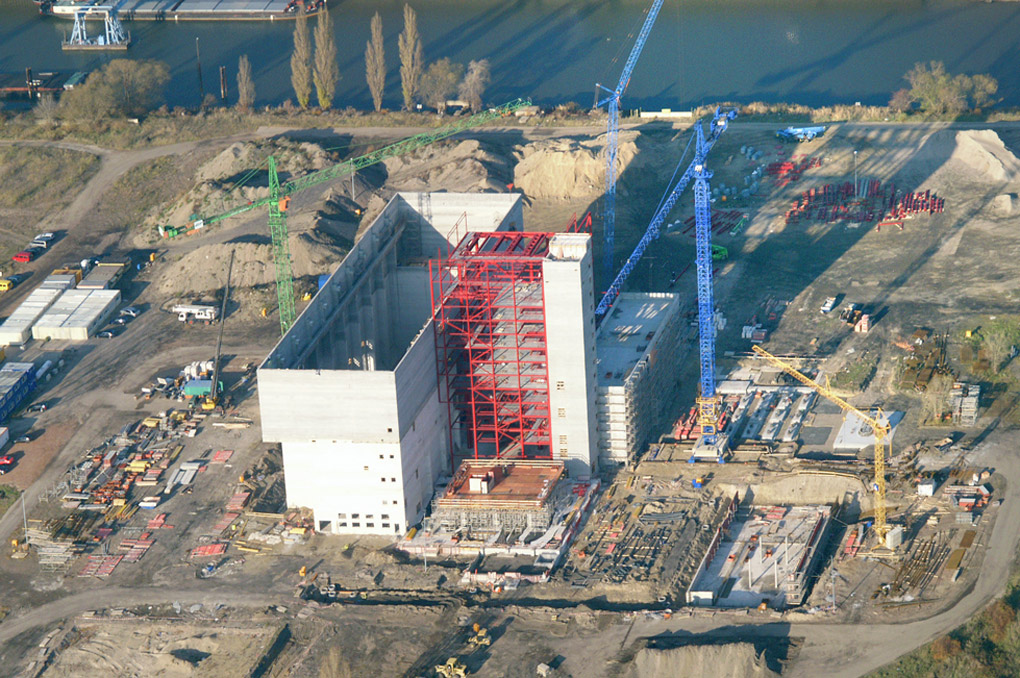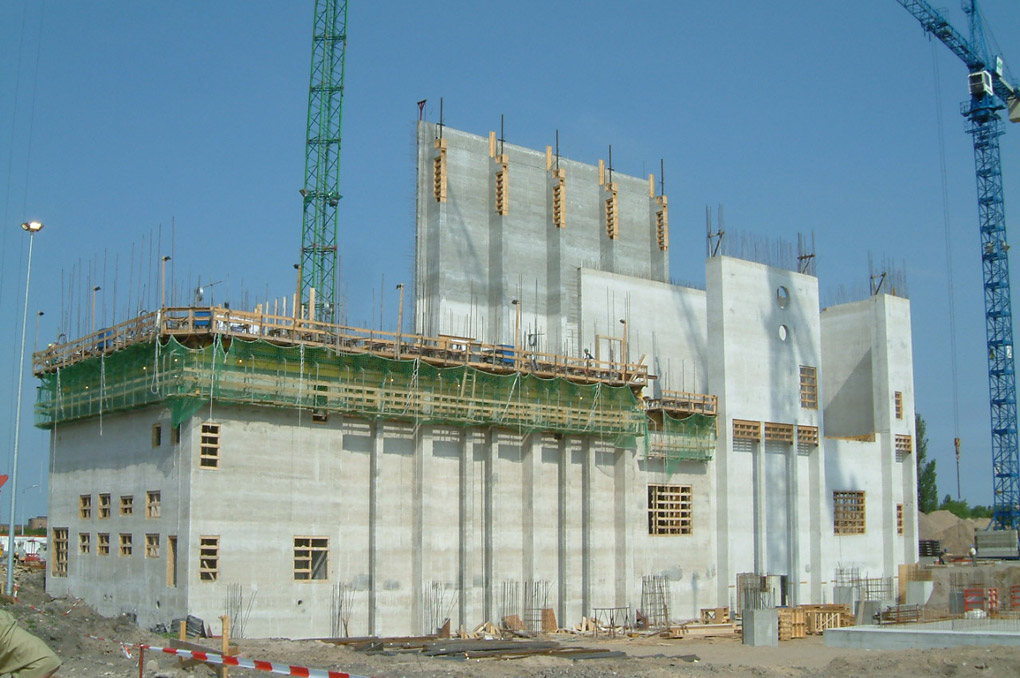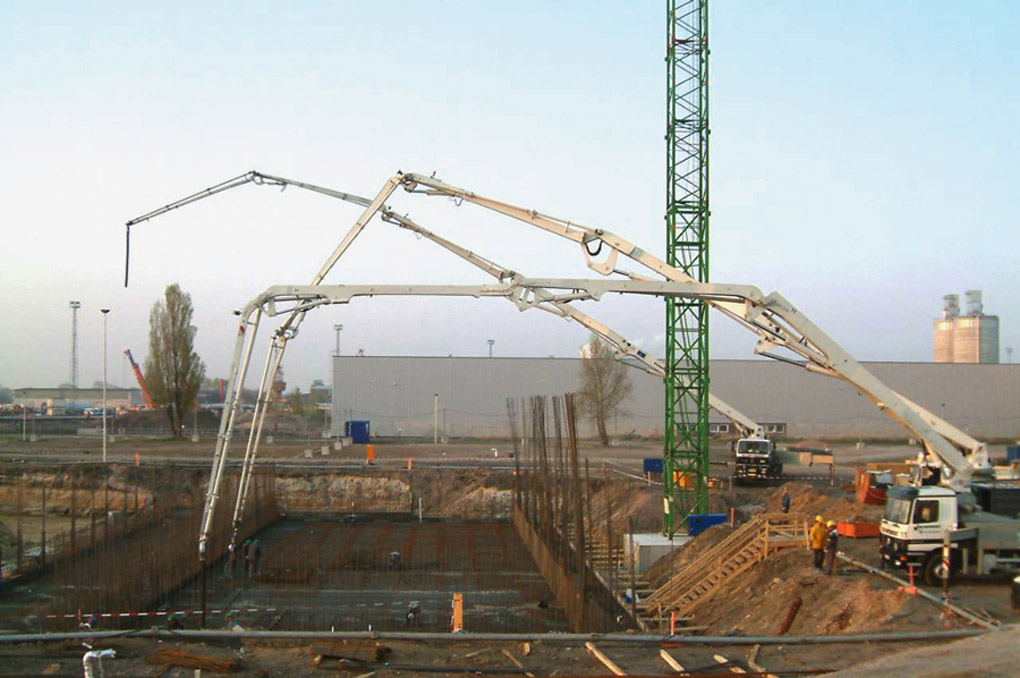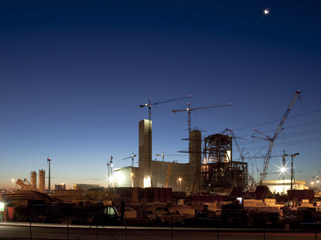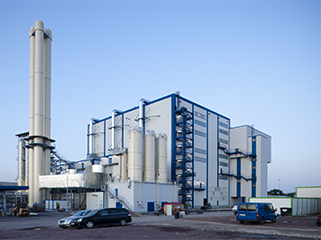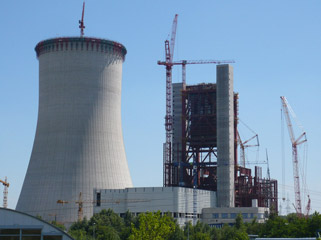In two incineration lines 300,000 tons of waste are disposed of annually in an environmentally compatible manner. Besides disposing of waste, during its incineration 170 million kilowatt hours of electricity and 300 million kilowatt hours district heating are generated per year – enough to supply approx. 44,000 households in Magdeburg.
The construction of the waste bunker with a surface area of 50 m x 27 m and a height of approx. 40 m was a special engineering challenge. The waste bunker was built completely of reinforced concrete. Complex details such as, for example, various recesses and projections in the walls or the simultaneous slipping of craneway consoles as well as the precise installation of various built-in parts had to be considered.
For the concrete, too, (impermeable concrete or waterproof concrete) special quality requirements had to be considered. Respective mixtures were prepared together with a concrete technologist and tested in advance by sample concreting.
